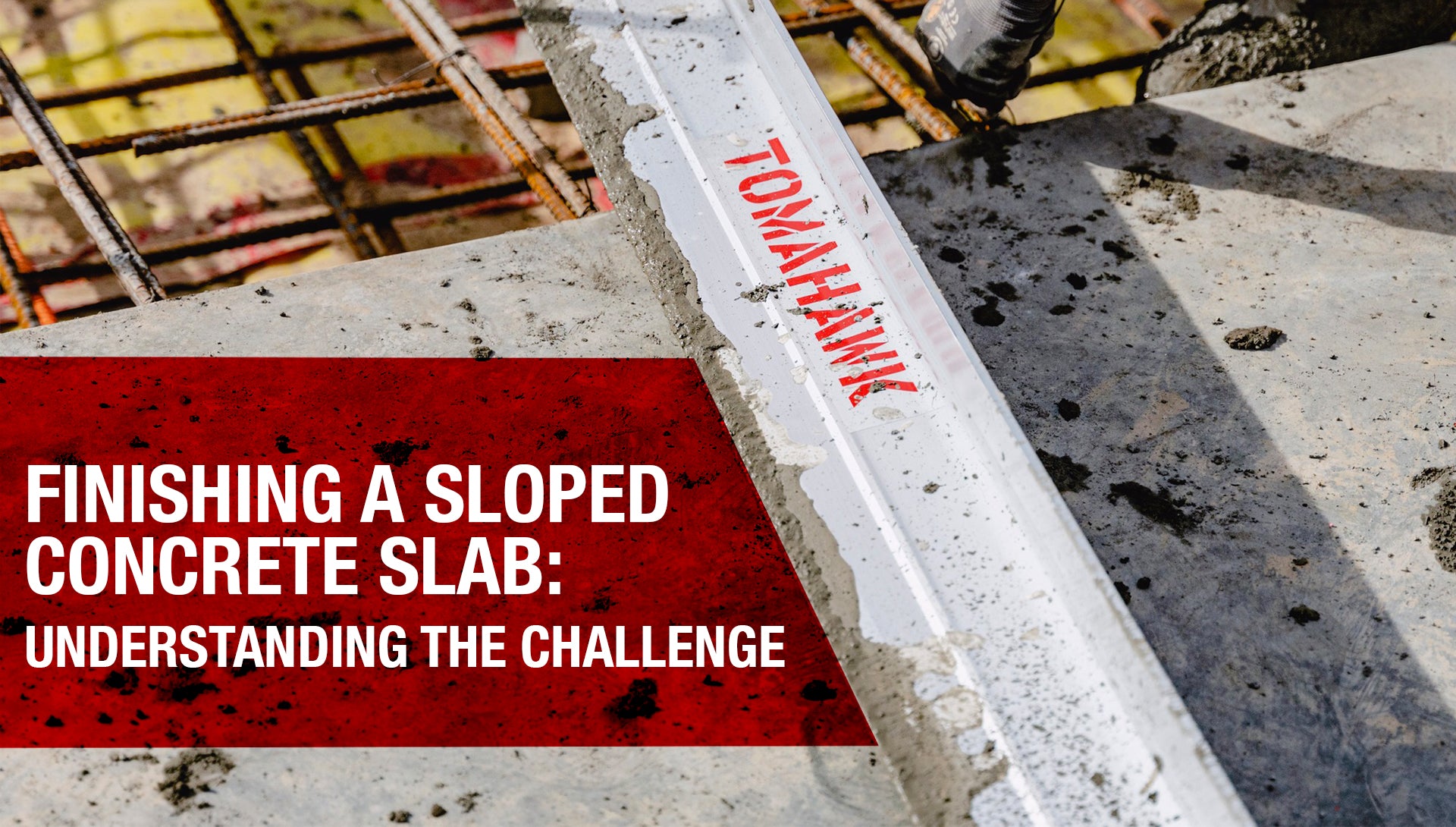When constructing concrete slabs on a slope, contractors face unique challenges that require specialized techniques and tools to ensure a smooth, durable finish. Sloped concrete projects demand precision due to their potential for runoff and uneven settling. This blog aims to equip contractors with the knowledge and tools necessary to tackle these challenges effectively.

Photo by Drew Beamer
Section 1: Preparing the Sloped Site
Site Assessment and Layout
Before any concrete is poured, thorough planning and preparation are crucial. Assessing the slope and planning for adequate drainage is the first step. It’s essential to ensure that the layout of the slab will adequately handle water runoff without undermining the structure.
Ground Preparation Techniques
Preparing the ground involves leveling the area as much as possible and using forms that are designed to handle the slope. Special attention should be paid to securing these forms since they're critical to defining the shape and integrity of the finished slab.

Section 2: Choosing the Right Tools for Sloped Concrete Finishing
Importance of Reliable Tools
Using reliable tools that can handle the demands of a sloped surface is vital. Power trowels are designed to provide a smooth finish even on challenging surfaces, ensuring efficiency and high-quality results.
Features of Power Trowels for Sloped Areas
Power Trowels offer adjustable blade speeds and pitch controls that are essential for managing the unique angles and runoff issues associated with slopes. The versatility of these trowels allows for adjustments on-the-fly, catering to the changing conditions of the sloped surface.
Section 3: Executing the Pour and Finish
Techniques for Pouring on a Slope
Pouring concrete on a slope requires a systematic approach to prevent the concrete from sliding or setting unevenly. Techniques such as segmenting the pour and using a slower-setting concrete mix can help manage this process more effectively.

Finishing Techniques Specific to Slopes
Finishing a sloped concrete slab involves not only smoothing the surface but also ensuring that all areas are accessible despite the gradient. Operators of power trowels need to be skilled in handling the equipment on uneven terrain, and features like the quick pitch adjustment make this task easier.
Section 4: Curing and Protecting Sloped Concrete
Curing Considerations
Curing sloped concrete slabs is critical to developing their strength and durability. Using curing compounds and covering the slab with plastic sheeting can prevent uneven drying and cracking.
Long-term Protection Strategies
Finally, long-term protection involves sealing the concrete to withstand water penetration, which is particularly important in sloped environments where water runoff can be a persistent issue.
Conclusion: Empowering Contractors
With the right preparation, tools, and techniques, finishing concrete slabs on a slope can be managed effectively, ensuring durability and client satisfaction. Having the right tools not only enhance efficiency but also empower contractors to deliver superior results, affirming their reputation in the competitive construction industry.
By leveraging reliable, innovative tools and strategic techniques, contractors can overcome the complexities of sloped concrete finishing and achieve success in their projects.










